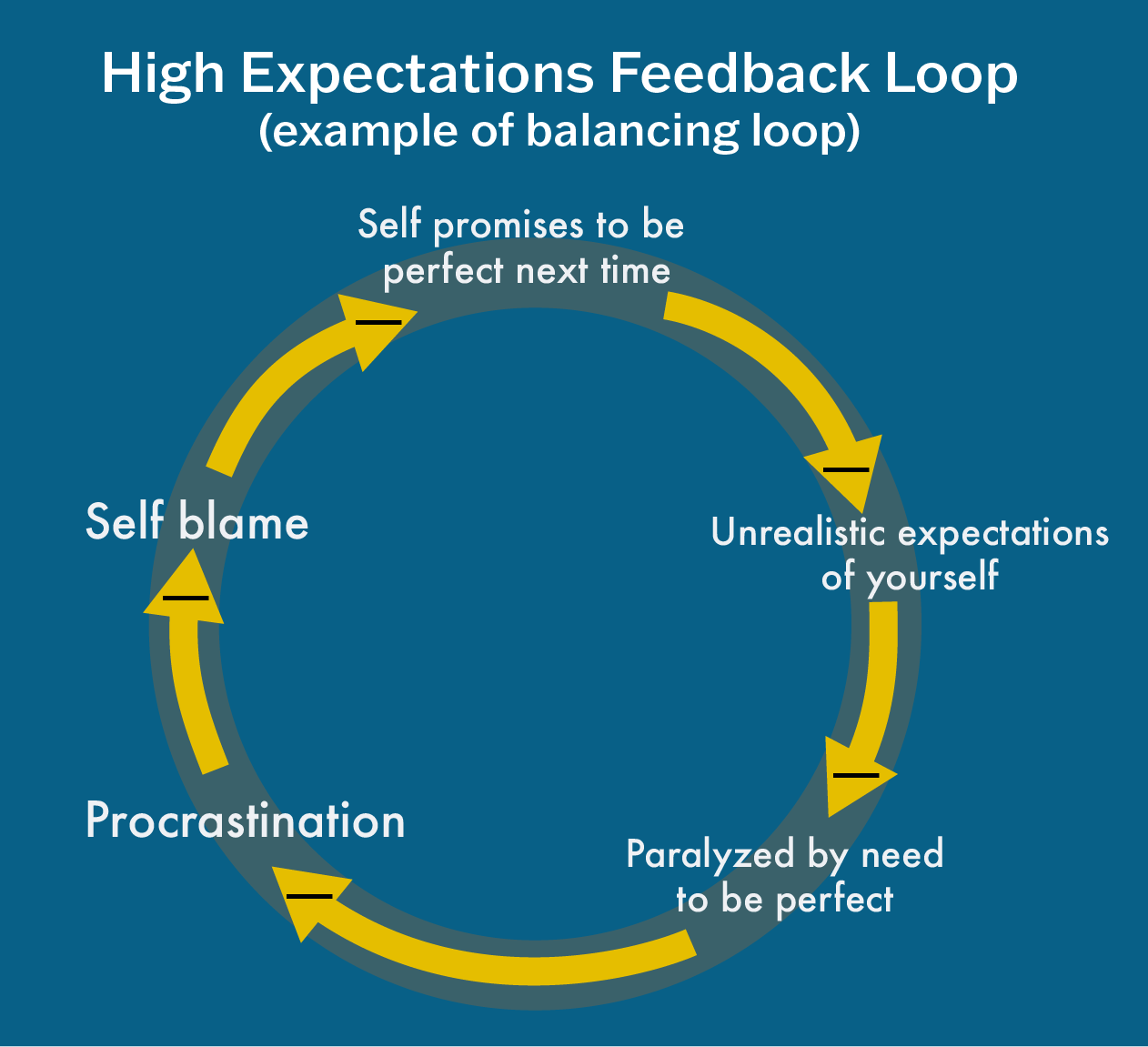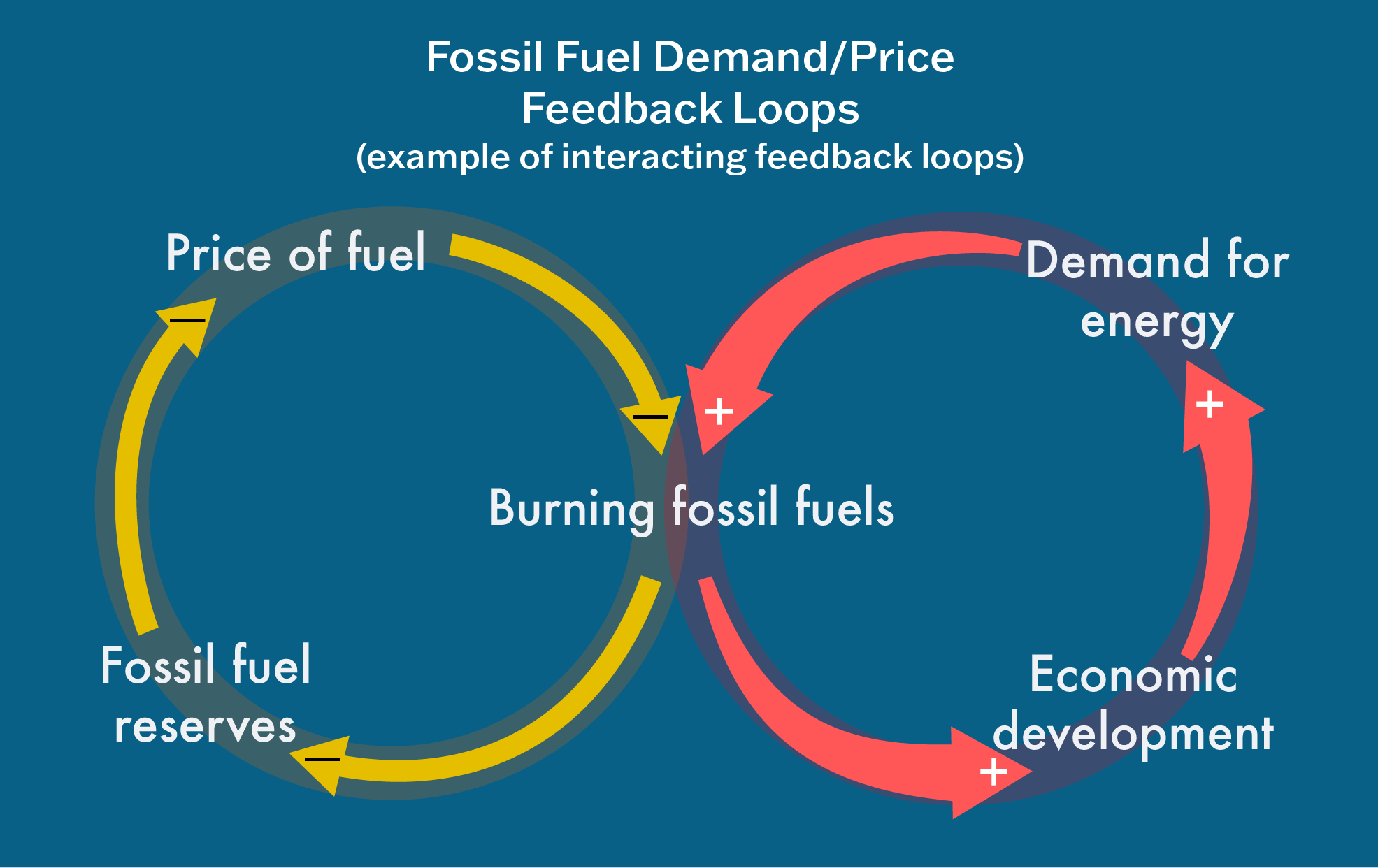Circular Patterns of Causation: Feedback Loops

marekuliasz / SHutterstock
“Systems of information-feedback control are fundamental to all life
and human endeavour, from the slow pace of biological evolution to
the launching of the latest space satellite. . . . Everything we do
as individuals, as an industry, or as a society is done in the
context of an information-feedback system.”
— Jay W. Forrester
Sometimes when we map out the interconnections, we may identify groupings known as feedback loops. A feedback loop is a “closed set of cause and effect relationships, each element of which can be viewed as having a partial influence on its own behaviour” (Sweeney et al., 2011, p. 8). Feedback loops highlight a circular pattern of causation where elements in a system create a change (or chain of changes) in one or more other element(s), which then come back to affect a change in the original element(s). So, there is a chain of relationships that ends up feeding information back into a system.
Feedback loops can have profound effects on the dynamics of a system: either by holding a system in place (i.e., as in a state of balance or oscillating equilibrium, like your body’s ability to regulate its temperature), or driving a system into a particular direction (i.e., where the circular nature of the cause and effect relationship reinforces a pattern of growth or decline, as the case with population growth, or the spread of an infectious virus). These types of feedback loops are referred to as “balancing” or “reinforcing” respectively. Feedback loops can create dynamics in a system which can be particularly “sticky” or difficult to shift. For example, think about how living in poverty can create health and educational obstacles that then lead to more poverty (reinforcing loop).

Humber College
Or, how our own sets of self-beliefs may keep us from achieving our potential by trapping us in unproductive cycles (balancing loop).

Humber College
Reinforcing and balancing loops can exist together at the same time as in the example of fossil fuel demand and pricing:

Humber College
Feedback loops are found everywhere. In most complex systems, feedback loops are linked together, often in fantastically complex patterns, and likely to have several reinforcing and balancing loops of differing strengths, pulling things in multiple directions and at varied rates of change. As a result, complex systems do much more than stay steady (balancing) or explode exponentially (reinforcing).
Watch grade 1 children use feedback loops to solve their problem of fighting on the playground. If nothing else, you should be struck by the fact that anyone can apply systems thinking—even young children:
Borton Boys short
To read more about feedback loops, visit "Reinforcing and Balancing Loops: Building Blocks of Dynamic Systems" and "Pocket Guide: Guidelines for Drawing Causal Loop Diagrams" by Daniel Kim. You can also do self-guided lessons on systems thinking tools like feedback loops through the Waters Center for Systems Thinking.